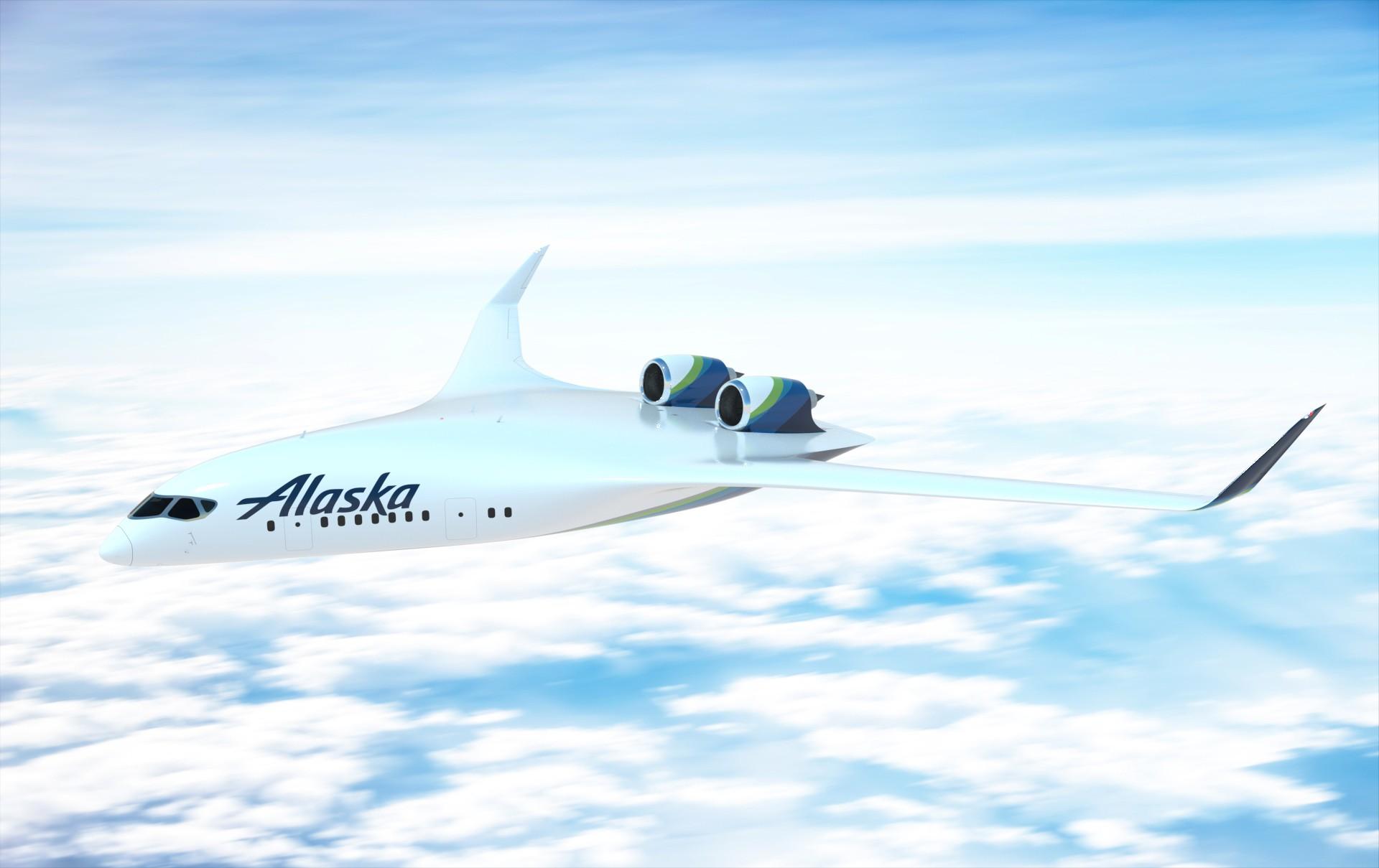This article is published in Aviation Week & Space Technology and is free to read until Aug 20, 2024. If you want to read more articles from this publication, please click the link to subscribe.

A rendering of JetZero's BWB aircraft in Alaska Airlines livery.
Alaska Airlines has become the first commercial operator to declare serious interest in the blended wing body (BWB) aircraft under development by JetZero, signing options for an undisclosed number of aircraft while investing in the California-based startup.
The financing, details of which are being withheld, has been made through Alaska Star Ventures, a venture capital arm launched by the airline in October 2021 with the mission of advancing emerging technologies to help reach a goal of net-zero carbon emissions by 2040.
JetZero has also revealed that Alaska was the first airline to back the company when it made a previously undisclosed initial investment in 2023 as part of the startup’s Series A financing round after it emerged from stealth mode.
Describing the JetZero BWB as an “innovative next-generation aircraft,” Diana Birkett Rakow, Alaska Airlines' senior vice president of public affairs and sustainability, says the airline is investing in the program’s promise of delivering a “significant step-change in fuel efficiency.”
JetZero is developing the BWB under an initial $235 million U.S. Defense Innovation Unit (DIU) contract awarded in 2023. The multi-role demonstrator program is aimed at a commercial airliner, initially for the mid-market sector. A derivative of the aircraft could also be developed into a military transport/tanker for the U.S. Air Force. JetZero says the BWB will be up to 50% more fuel efficient than current tube-and-wing transport aircraft in its class.
The company recently completed the preliminary design review for a full-scale demonstrator, which it aims to complete in late 2026 for flight tests beginning in 2027. Sized around the capacity of a Boeing 767 with a wingspan close to that of an Airbus A330, the demonstrator will be built and tested in collaboration with Northrop Grumman and its prototyping subsidiary Scaled Composites.
Although Alaska currently operates an all-Boeing mainline fleet of 737s, with the 190-seat 737-10 due to become the largest model in the fleet when it enters service in 2025, the airline is widely expected to see a requirement for higher capacity aircraft in future. Alaska will also indirectly move into widebody operations through its proposed $1.9 billion merger with Hawaiian Airlines if the tie-up is approved by the U.S. Justice Department, which is set to announce a decision within days.
Hawaiian, which would become a wholly owned subsidiary of Alaska if the merger gets the go-ahead, currently operates a fleet that includes Airbus A321neos, as well as A330-200s with 278 seats and 787-9s configured for up to 300 passengers. While there is no detail of which BWB version Alaska has placed options on, JetZero’s initial Z4 model is sized to seat between approximately 170 and 290 passengers. Two proposed derivatives will make up the rest of the family: a Z3 model covering the 100-170 seat range; and a Z5 covering the 290-370 seat range.
In a separate development, oversight for the BWB project has now been transferred from the DIU to the U.S. Air Force’s 763rd Enterprise Sourcing Squadron (ESS), which manages acquisitions to meet Air Mobility Command mission requirements. One of nine enterprise-sourcing squadrons within the Air Force Installation Contracting Center, the 763rd ESS also serves as the Center of Excellence for Category Management, Category 7, Transportation and Logistics.






Comments